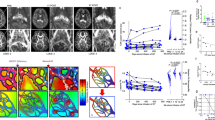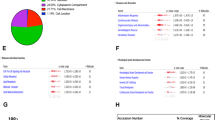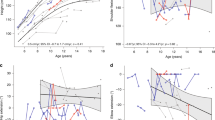Abstract
Hematopoietic stem cell transplantation as a treatment for childhood cerebral adrenoleukodystrophy (ALD) has historically only been successful in early disease. As ALD is associated with oxidative damage, we reasoned that adjunctive therapy with an antioxidant agent, N-acetyl-L-cysteine (NAC), may provide protection from rapid neurologic decline in boys with advanced cerebral disease. We report three boys with advanced ALD, whose neurologic status and brain radiographic findings were stabilized by treatment including NAC 8–11 months after hematopoietic stem cell transplantation. These results contrast with previous survival data in cerebral ALD patients who had a similar degree of brain involvement, all of whom died within 1 year of stem cell infusion despite a full donor engraftment. Thus, NAC merits investigation as a therapeutic strategy for patients with advanced ALD as an intervention that could change this lethal disease to a condition amendable to treatment with hematopoietic stem cell transplantation.
This is a preview of subscription content, access via your institution
Access options
Subscribe to this journal
Receive 12 print issues and online access
$259.00 per year
only $21.58 per issue
Buy this article
- Purchase on Springer Link
- Instant access to full article PDF
Prices may be subject to local taxes which are calculated during checkout


Similar content being viewed by others
References
Jia Z, Pei Z, Li Y, Wei L, Smith KD, Watkins PA . X-linked adrenoleukodystrophy: role of very long-chain acyl-CoA synthetases. Mol Genet Metab 2004; 83: 117–127.
Wanders RJ, Waterham HR . Peroxisomal disorders I: biochemistry and genetics of peroxisome biogenesis disorders. Clin Genet 2005; 67: 107–133.
Mahmood A, Dubey P, Moser HW, Moser A . X-linked adrenoleukodystrophy: therapeutic approaches to distinct phenotypes. Pediatr Transplant 2005; 9 (Suppl 7): 55–62.
Moser HW, Loes DJ, Melhem ER, Raymond GV, Bezman L, Cox CS et al. X-linked adrenoleukodystrophy: overview and prognosis as a function of age and brain magnetic resonance imaging abnormality. A study involving 372 patients. Neuropediatrics 2000; 31: 227–239.
Melhem ER, Loes DJ, Georgiades CS, Raymond GV, Moser HW . X-linked adrenoleukodystrophy: the role of contrast-enhanced MR imaging in predicting disease progression. AJNR Am J Neuroradiol 2000; 21: 839–844.
Loes DJ, Stillman AE, Hite S, Shapiro E, Lockman L, Latchaw RE et al. Childhood cerebral form of adrenoleukodystrophy: short-term effect of bone marrow transplantation on brain MR observations. AJNR Am J Neuroradiol 1994; 15: 1767–1771.
Loes DJ, Hite S, Moser H, Stillman AE, Shapiro E, Lockman L et al. Adrenoleukodystrophy: a scoring method for brain MR observations. AJNR Am J Neuroradiol 1994; 15: 1761–1766.
Peters C, Charnas LR, Tan Y, Ziegler RS, Shapiro EG, DeFor T et al. Cerebral X-linked adrenoleukodystrophy: the international hematopoietic cell transplantation experience from 1982 to 1999. Blood 2004; 104: 881–888.
Shapiro E, Krivit W, Lockman L, Jambaque I, Peters C, Cowan M et al. Long-term effect of bone-marrow transplantation for childhood-onset cerebral X-linked adrenoleukodystrophy. Lancet 2000; 356: 713–718.
Shapiro EG, Balthazor M . Metabolic and neurodegenerative disorders of childhood. In: Taylor G, Ris D, Yeates K (eds). Pediatric Neuropsychology: Research, Theory and Practice. Guilford Press: New York, NY, USA, 2000, pp 171–205.
Powers JM, Pei Z, Heinzer AK, Deering R, Moser AB, Moser HW et al. Adreno-leukodystrophy: oxidative stress of mice and men. J Neuropathol Exp Neurol 2005; 64: 1067–1079.
Henderson JT, Javaheri M, Kopko S, Roder JC . Reduction of lower motor neuron degeneration in wobbler mice by N-acetyl-L-cysteine. J Neurosci 1996; 16: 7574–7582.
Vargas CR, Wajner M, Sirtori LR, Goulart L, Chiochetta M, Coelho D et al. Evidence that oxidative stress is increased in patients with X-linked adrenoleukodystrophy. Biochim Biophys Acta 2004; 1688: 26–32.
Ferrari G, Yan CY, Greene LA . N-acetylcysteine (D- and L-stereoisomers) prevents apoptotic death of neuronal cells. J Neurosci 1995; 15: 2857–2866.
Scharf SJ, Smith AG, Hansen JA, McFarland C, Erlich HA . Quantitative determination of bone marrow transplant engraftment using fluorescent polymerase chain reaction primers for human identity markers. Blood 1995; 85: 1954–1963.
Zhang CG, Welin D, Novikov L, Kellerth JO, Wiberg M, Hart AM . Motor neuron protection by N-acetyl-cysteine after ventral root avulsion and ventral rhizotomy. Br J Plast Surg 2005; 58: 765–773.
Elkon H, Melamed E, Offen D . Oxidative stress, induced by 6-hydroxydopamine, reduces proteasome activities in PC12 cells: implications for the pathogenesis of Parkinson's disease. J Mol Neurosci 2004; 24: 387–400.
Onyango IG, Bennett Jr JP, Tuttle JB . Endogenous oxidative stress in sporadic Alzheimer's disease neuronal cybrids reduces viability by increasing apoptosis through pro-death signaling pathways and is mimicked by oxidant exposure of control cybrids. Neurobiol Dis 2005; 19: 312–322.
Gilgun-Sherki Y, Barhum Y, Atlas D, Melamed E, Offen D . Analysis of gene expression in MOG-induced experimental autoimmune encephalomyelitis after treatment with a novel brain-penetrating antioxidant. J Mol Neurosci 2005; 27: 125–135.
Aoyama K, Suh SW, Hamby AM, Liu J, Chan WY, Chen Y et al. Neuronal glutathione deficiency and age-dependent neurodegeneration in the EAAC1 deficient mouse. Nat Neurosci 2006; 9: 119–126.
Walson PD, Groth Jr JF . Acetaminophen hepatotoxicity after a prolonged ingestion. Pediatrics 1993; 91: 1021–1022.
Taniike M, Mohri I, Eguchi N, Irikura D, Urade Y, Okada S et al. An apoptotic depletion of oligodendrocytes in the twitcher, a murine model of globoid cell leukodystrophy. J Neuropathol Exp Neurol 1999; 58: 644–653.
Bradl M, Linington C . Animal models of demyelination. Brain Pathol 1996; 6: 303–311.
Acknowledgements
The rationale for the use of NAC in this study was prompted by a phone call from J Powers, MD (University of Rochester School of Medicine and Dentistry, Department of Pathology and Laboratory Medicine, Rochester, NY, USA) in July, 2005. This study was supported by the Children's Cancer Research Fund.
Author information
Authors and Affiliations
Corresponding author
Rights and permissions
About this article
Cite this article
Tolar, J., Orchard, P., Bjoraker, K. et al. N-acetyl-L-cysteine improves outcome of advanced cerebral adrenoleukodystrophy. Bone Marrow Transplant 39, 211–215 (2007). https://doi.org/10.1038/sj.bmt.1705571
Received:
Revised:
Accepted:
Published:
Issue Date:
DOI: https://doi.org/10.1038/sj.bmt.1705571
Keywords
This article is cited by
-
The Landscape of Hematopoietic Stem Cell Transplant and Gene Therapy for X-Linked Adrenoleukodystrophy
Current Treatment Options in Neurology (2019)
-
Biomarker Identification, Safety, and Efficacy of High-Dose Antioxidants for Adrenomyeloneuropathy: a Phase II Pilot Study
Neurotherapeutics (2019)
-
Modeling and rescue of defective blood–brain barrier function of induced brain microvascular endothelial cells from childhood cerebral adrenoleukodystrophy patients
Fluids and Barriers of the CNS (2018)
-
Oxidative Imbalance, Nitrative Stress, and Inflammation in C6 Glial Cells Exposed to Hexacosanoic Acid: Protective Effect of N-acetyl-l-cysteine, Trolox, and Rosuvastatin
Cellular and Molecular Neurobiology (2018)
-
Oxidative Stress in Patients with X-Linked Adrenoleukodystrophy
Cellular and Molecular Neurobiology (2016)



